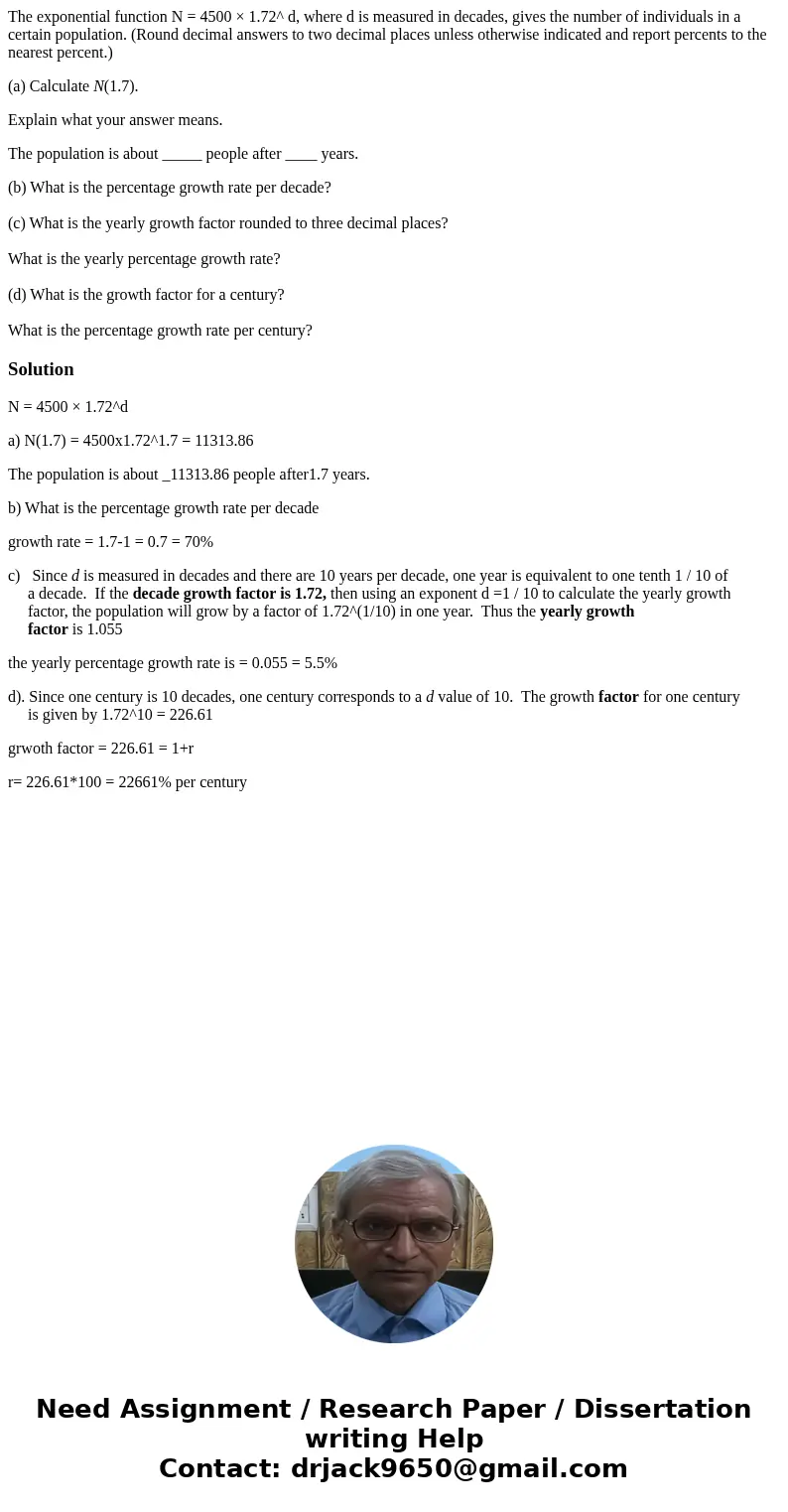The exponential function N 4500 172 d where d is measured
The exponential function N = 4500 × 1.72^ d, where d is measured in decades, gives the number of individuals in a certain population. (Round decimal answers to two decimal places unless otherwise indicated and report percents to the nearest percent.)
(a) Calculate N(1.7).
Explain what your answer means.
The population is about _____ people after ____ years.
(b) What is the percentage growth rate per decade?
(c) What is the yearly growth factor rounded to three decimal places?
What is the yearly percentage growth rate?
(d) What is the growth factor for a century?
What is the percentage growth rate per century?
Solution
N = 4500 × 1.72^d
a) N(1.7) = 4500x1.72^1.7 = 11313.86
The population is about _11313.86 people after1.7 years.
b) What is the percentage growth rate per decade
growth rate = 1.7-1 = 0.7 = 70%
c) Since d is measured in decades and there are 10 years per decade, one year is equivalent to one tenth 1 / 10 of
a decade. If the decade growth factor is 1.72, then using an exponent d =1 / 10 to calculate the yearly growth
factor, the population will grow by a factor of 1.72^(1/10) in one year. Thus the yearly growth
factor is 1.055
the yearly percentage growth rate is = 0.055 = 5.5%
d). Since one century is 10 decades, one century corresponds to a d value of 10. The growth factor for one century
is given by 1.72^10 = 226.61
grwoth factor = 226.61 = 1+r
r= 226.61*100 = 22661% per century

 Homework Sourse
Homework Sourse